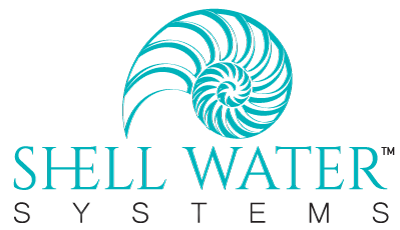UV sterilizers are an innovative technology that deactivate bacteria, viruses, and other microbiological water contaminants without the use of chemicals.
A great way to understand a UV sterilizer is to consider the effect of ordinary sunlight when we spend too much time outdoors in the sun – we can get a sunburn and our skin can be damaged. UV water disinfection is a similar process, except that it is dramatically more powerful than sunlight. A special lamp, surrounded by a quartz glass sleeve inside the stainless steel chamber that the water flows through, produces concentrated UV light at a specific wavelength tested to be the most damaging to microorganisms. Inside the chamber, the microbes are exposed to the UV light which damages their DNA. Once the DNA of the organism is damaged, the microorganism is unable to regulate its functions and reproduce. It either dies or is no longer able to reproduce and cause illness. We call this inactivation.
Just as the extent of your sunburn can vary depending on how much time you spend in the sun and the intensity of the sunlight, the amount of UV light the contaminants are exposed to determines the effectiveness of the UV sterilizer. This is known as the UV dose. The 2 factors that contribute to UV dose are the exposure time (which is directly related to the flow rate of the water through the UV chamber), and the intensity of the UV light (related to the effectiveness and design of the UV lamp and chamber, the age of the lamp, the clarity of the sleeve, and the clarity of the water being treated). We refer to the clarity of the water as UV transmittance or UVT.
True or False
- UV is effective at destroying micro-organisms
False, Technically, UV inactivates micro-organisms, preventing them to
reproduce and make you sick
- Chlorine is effective against cryptosporidium and giardia.
False
- North Americans spend more on bottled water than iPhones or movies
True
Why Treat Water With UV light?
Water treatment is necessary
– Improve color, taste, and odor
– Protect pipes and fixtures
– Inactivate pathogens
A favorable water test means there’s nothing to worry about…
Not Necessarily!
Only looks for certain indicator organisms
• Temporarily fooled by a shock chlorine treatment
• Water quality varies with time
– Short term disturbances, such as extreme weather or snow melt
– Long term disturbances, such as urbanization and agricultural practice
Waterborne Illness Impact:
Gastrointestinal symptoms are the norm but not the only symptoms.
• Waterborne illness typically includes nausea, vomiting, or diarrhea.
• Can also include headache, fever, skin rashes, eye, ear, respiratory, and wound infection,
and can even be life-threatening.
• In healthy adults, most waterborne illness is temporarily debilitating but not life threatening.
Outcomes more devastating in sensitive populations.
• At risk populations include:
• Those with compromised immune systems;
• Infants;
• The elderly; and
• Pregnant women.
• For these groups symptoms can be much more severe or even fatal.
Costs can be significant.
• Average in-patient hospitalization costs/visit Giardiasis $9K ; Cryptosporidiosis $20K USD
CDC top causes of drinking water outbreaks:
PUBLIC WATER
1. Giardia 6. Copper
2. Legionella 7. Salmonella
3. Norovirus 8. Hepatitis A
4. Shigella 9. Cryptosporidium
5. Campylobacter 10. E. Coli,
Disinfection UV Light Filtration:
• Process of freeing something (water)
from infection or harmful microbes.
• Can be achieved by chemical (chlorine) or
physical (UV, filtration)
UV technology is recognized as an effective means
of disinfecting water supplies by North American
health authorities.
Disinfecting Well Water
• There are two types of disinfection: physical & chemical
• It is important to remember the definition of disinfection:
– To cleanse so as to destroy or prevent the growth of disease
carrying microorganisms
• Chemical disinfection is when a chemical agent must be added to the
water for disinfection (ie. chlorine, iodine, ozone)
• Physical disinfection is a physical means of inactivating or removing
Why not use chemical disinfection?
• Will alter the water
– Will change taste, odor
– May change pH, color
• May cause carcinogenic disinfection by-products
– Trihalomethane (THM)
bacteria (ie UV light, boiling, filtration)
UV Disinfection Advantages
• Fast acting – almost instant disinfection
• Safe and chemical-free
– Don’t handle dangerous, corrosive, or toxic chemicals
• No harmful disinfection by-products
• No chemical addition to water – does not alter pH, taste, odor, color,
etc.
• Effective against broader range of organisms than chlorine
• Proven and trusted – many industries and applications
• Cost-effective and simple to maintain
How does UV disinfect?
• UV penetrates cell wall
• Permanently alters the DNA structure
• Micro-organism is “inactivated”
• Environmentally responsible
